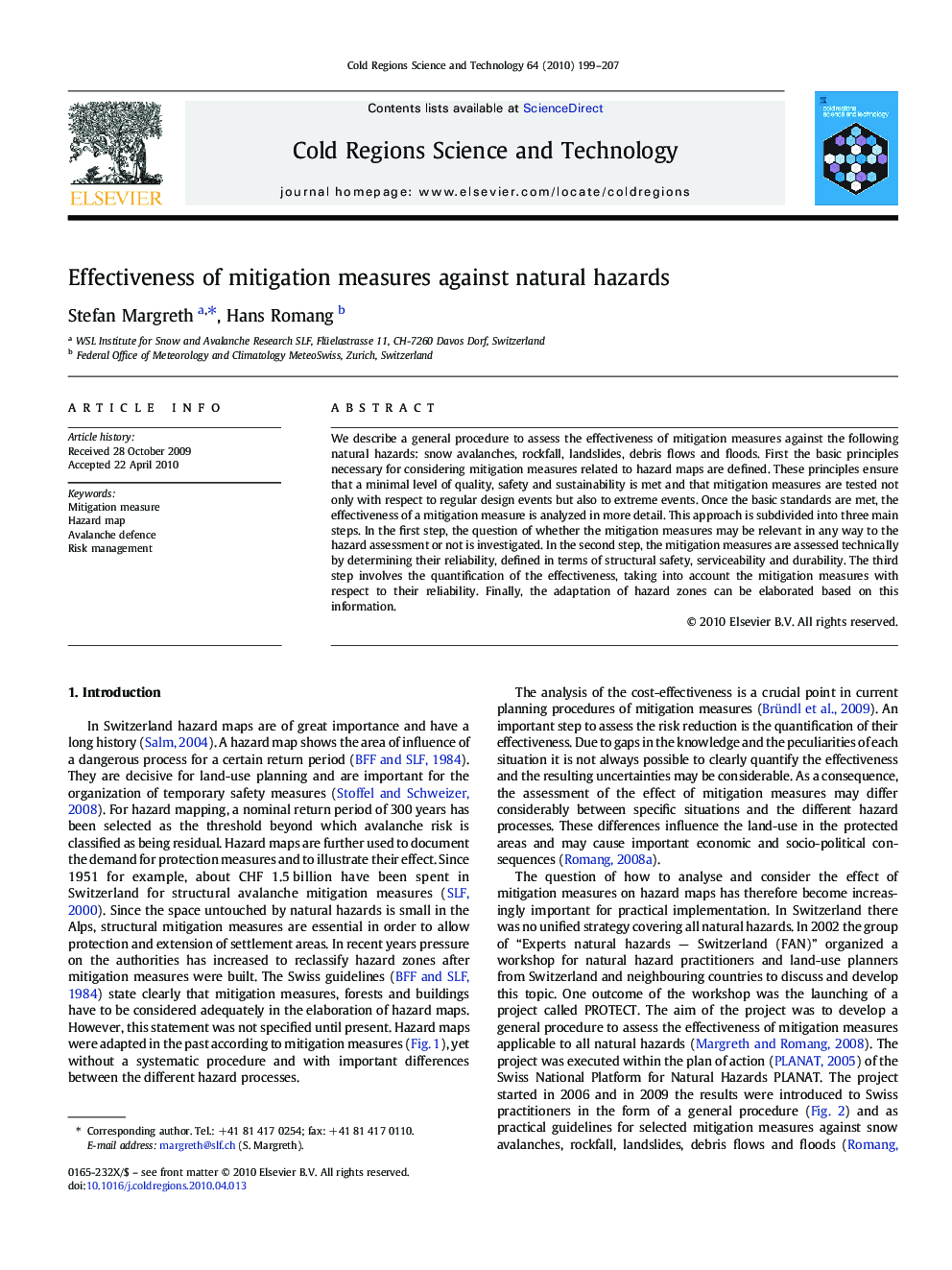| Article ID | Journal | Published Year | Pages | File Type |
|---|---|---|---|---|
| 4676244 | Cold Regions Science and Technology | 2010 | 9 Pages |
We describe a general procedure to assess the effectiveness of mitigation measures against the following natural hazards: snow avalanches, rockfall, landslides, debris flows and floods. First the basic principles necessary for considering mitigation measures related to hazard maps are defined. These principles ensure that a minimal level of quality, safety and sustainability is met and that mitigation measures are tested not only with respect to regular design events but also to extreme events. Once the basic standards are met, the effectiveness of a mitigation measure is analyzed in more detail. This approach is subdivided into three main steps. In the first step, the question of whether the mitigation measures may be relevant in any way to the hazard assessment or not is investigated. In the second step, the mitigation measures are assessed technically by determining their reliability, defined in terms of structural safety, serviceability and durability. The third step involves the quantification of the effectiveness, taking into account the mitigation measures with respect to their reliability. Finally, the adaptation of hazard zones can be elaborated based on this information.
